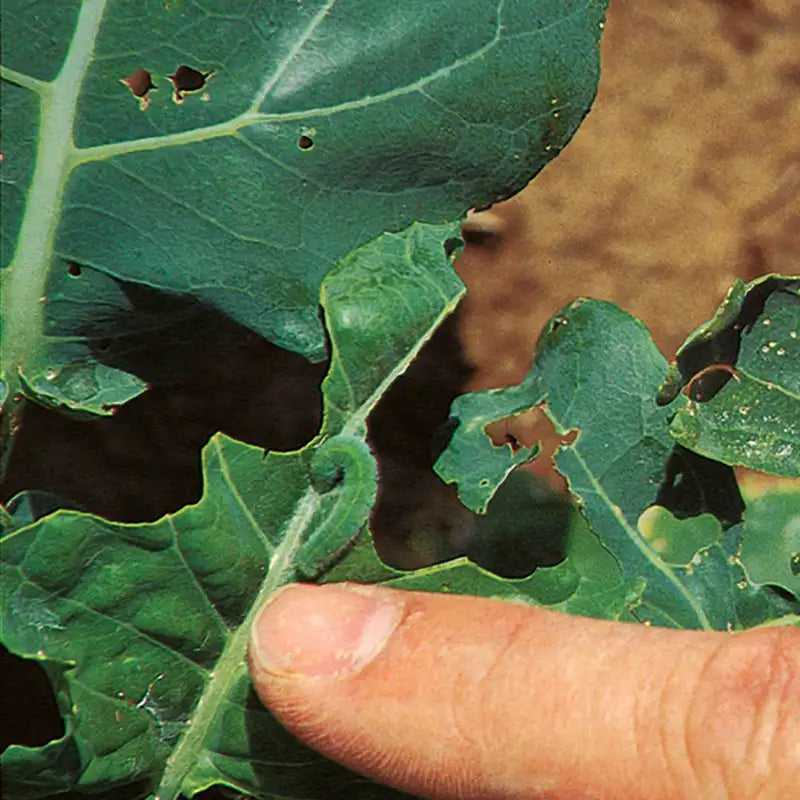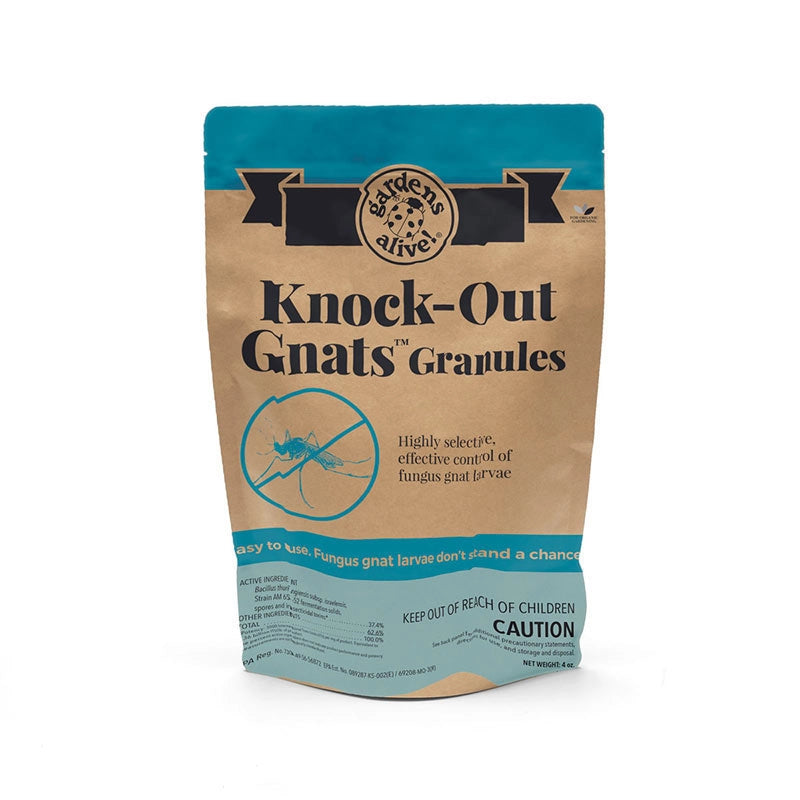“Bagworms”: The Caterpillar Pests You Didn’t Know You Had
Q. Tim in Cream Ridge New Jersey writes: “My question is about bagworms, which have infested large areas of my property in the beautiful horse country of western Monmouth County. We have a large hedge of very mature Arbor Vitae that are pretty much being stripped by these things. They are also on blue spruces around the property, but I am more concerned about the Arbor Vitae, as the trees separate our property from our neighbors, and I’d hate to see this big hedge turn into a stand of dead trees.
“I had an expert from what I believe to be a reputable national tree care company who advised me that only chemical sprays could solve the problem of these horrible little "worms." While I have instead taken hours to pick and burn their cleverly disguised "pinecones'', I cannot reach all of them and he advised an insecticide spray when they are eating during the growing season.
“As you can imagine, I am a steadfast organic grower with bird baths, pollinator gardens, bird houses, fruit trees, and wildlife all around my little homestead. I picture chemicals being sprayed into the trees and all of the birds falling out dead. YIKES!!
“I have never heard of these ‘worms’ until this past year; but the tree care rep said that this area of NJ in particular is known for these infestations. Of course, now I notice these things on stripped trees all around! I’ve also noticed that out on Route 195 (the road to the beaches) there are signs that state that the roadside trees “have been treated with noxious sprays.”
“PLEASE let me know how to get in front of these bagworms in an organic way. They are even on my skip laurels now!!”
A. First, those ‘noxious spray’ signs are not about insecticides, but nasty foul-smelling agents that are sprayed on evergreens in wild areas to deter people looking for free Christmas trees. If you ignore the signs, cut the tree and bring it inside, your home will soon smell like seventeen skunks recently held a steel cage match in your living room.
I wish bagworms were that easy to explain. But let’s start with the fact they are not ‘worms’; and neither are the many other caterpillars whose common name includes the word worm; like the corn earworm, cabbage worm, tomato hornworm, etc. Perhaps because some of these pests do sort of resemble worms (although extremely alien-looking ones) farmers started calling them ‘worms’ and the name stuck. So if something {quote} ‘wormy’ is attacking your plants, it/they are probably caterpillars, which is an important distinction, as we shall soon see.
Bagworm nests look a LOT like pinecones, so they are often ignored when they first show up on coniferous plants like arborvitae and juniper. They also breed on pines, spruce, apple, boxelder, elms, black locust, maple, oaks, persimmon, poplars, and willows. (That’s per the USDA; I’ve personally only seen them on arborvitae and juniper.)
Now we get to the weird part. The adult males are hairy moths that emerge from their bags to mate in the Fall. But the adult females are grub-like creatures that have no wings and spend their entire life inside their namesake “bags”, which are constructed of locally available materials that make it look like the host plant produced them naturally.
The adult males mate with these weird grub-like females through openings in the bags. (I am NOT making this up.) The adults die soon after mating, but not before the female lays a clutch of eggs inside the bag. (Which, in case you were wondering, has an opening at the bottom for the convenient disposal of bagworm poop.) Ahem.
The baby ‘worms’ emerge in early Spring: April through June depending on your location and the weather. If the wind is right, it can carry them to another host plant. Otherwise, they’ll feed on the same tree that birthed them.
And now that they’re actively feeding, they are vulnerable to a very specific organic control: the old original form of Bt, which stand for Bacillus Thüringensis, a naturally occurring soil-borne substance that has been around for many decades and ONLY harms caterpillars that are actively feeding. It will not affect birds, bees, adult butterflies, frogs, toads, pets, or people; just hungry, hungry caterpillars. (Warning: don’t spray it on your milkweed or parsley plants to avoid harming really cool-looking butterflies-to-be.)
Unless you spray during feeding time with Bt (which is widely available online and at garden centers) they will quickly collect material from the host plant and make their own bag, emerging only to feed after it’s constructed. And because the bag is composed of material from the plant they’re eating, it’s very easy to miss.
You will eventually see the damage they’ve done while feeding, but at that point, they’ll be safe inside their bags, where no kind of pesticide can reach them. So if you’ve had bagworms on a plant in the past, keep a close eye on it for the next couple of months and have some Bt at the ready. You also can—and should—prune off and destroy any bags you find at any time of year.
NOTE: There are several other strains of the basic organism Bt. One of the best known is BTI (the I stands for Israelensis because it was famously discovered on a cat’s paw near a beach in Israel). When added to standing water. BTI prevents mosquito larvae from developing into biting adults. It is widely available in the form of donut-shaped dunks (for ponds) and granules for smaller areas. This is THE best time of year to deliberately put out buckets of water and treat them with BTI to knock down the first generation of mosquitoes—before you get bit.
“I had an expert from what I believe to be a reputable national tree care company who advised me that only chemical sprays could solve the problem of these horrible little "worms." While I have instead taken hours to pick and burn their cleverly disguised "pinecones'', I cannot reach all of them and he advised an insecticide spray when they are eating during the growing season.
“As you can imagine, I am a steadfast organic grower with bird baths, pollinator gardens, bird houses, fruit trees, and wildlife all around my little homestead. I picture chemicals being sprayed into the trees and all of the birds falling out dead. YIKES!!
“I have never heard of these ‘worms’ until this past year; but the tree care rep said that this area of NJ in particular is known for these infestations. Of course, now I notice these things on stripped trees all around! I’ve also noticed that out on Route 195 (the road to the beaches) there are signs that state that the roadside trees “have been treated with noxious sprays.”
“PLEASE let me know how to get in front of these bagworms in an organic way. They are even on my skip laurels now!!”
A. First, those ‘noxious spray’ signs are not about insecticides, but nasty foul-smelling agents that are sprayed on evergreens in wild areas to deter people looking for free Christmas trees. If you ignore the signs, cut the tree and bring it inside, your home will soon smell like seventeen skunks recently held a steel cage match in your living room.
I wish bagworms were that easy to explain. But let’s start with the fact they are not ‘worms’; and neither are the many other caterpillars whose common name includes the word worm; like the corn earworm, cabbage worm, tomato hornworm, etc. Perhaps because some of these pests do sort of resemble worms (although extremely alien-looking ones) farmers started calling them ‘worms’ and the name stuck. So if something {quote} ‘wormy’ is attacking your plants, it/they are probably caterpillars, which is an important distinction, as we shall soon see.
Bagworm nests look a LOT like pinecones, so they are often ignored when they first show up on coniferous plants like arborvitae and juniper. They also breed on pines, spruce, apple, boxelder, elms, black locust, maple, oaks, persimmon, poplars, and willows. (That’s per the USDA; I’ve personally only seen them on arborvitae and juniper.)
Now we get to the weird part. The adult males are hairy moths that emerge from their bags to mate in the Fall. But the adult females are grub-like creatures that have no wings and spend their entire life inside their namesake “bags”, which are constructed of locally available materials that make it look like the host plant produced them naturally.
The adult males mate with these weird grub-like females through openings in the bags. (I am NOT making this up.) The adults die soon after mating, but not before the female lays a clutch of eggs inside the bag. (Which, in case you were wondering, has an opening at the bottom for the convenient disposal of bagworm poop.) Ahem.
The baby ‘worms’ emerge in early Spring: April through June depending on your location and the weather. If the wind is right, it can carry them to another host plant. Otherwise, they’ll feed on the same tree that birthed them.
And now that they’re actively feeding, they are vulnerable to a very specific organic control: the old original form of Bt, which stand for Bacillus Thüringensis, a naturally occurring soil-borne substance that has been around for many decades and ONLY harms caterpillars that are actively feeding. It will not affect birds, bees, adult butterflies, frogs, toads, pets, or people; just hungry, hungry caterpillars. (Warning: don’t spray it on your milkweed or parsley plants to avoid harming really cool-looking butterflies-to-be.)
Unless you spray during feeding time with Bt (which is widely available online and at garden centers) they will quickly collect material from the host plant and make their own bag, emerging only to feed after it’s constructed. And because the bag is composed of material from the plant they’re eating, it’s very easy to miss.
You will eventually see the damage they’ve done while feeding, but at that point, they’ll be safe inside their bags, where no kind of pesticide can reach them. So if you’ve had bagworms on a plant in the past, keep a close eye on it for the next couple of months and have some Bt at the ready. You also can—and should—prune off and destroy any bags you find at any time of year.
NOTE: There are several other strains of the basic organism Bt. One of the best known is BTI (the I stands for Israelensis because it was famously discovered on a cat’s paw near a beach in Israel). When added to standing water. BTI prevents mosquito larvae from developing into biting adults. It is widely available in the form of donut-shaped dunks (for ponds) and granules for smaller areas. This is THE best time of year to deliberately put out buckets of water and treat them with BTI to knock down the first generation of mosquitoes—before you get bit.



